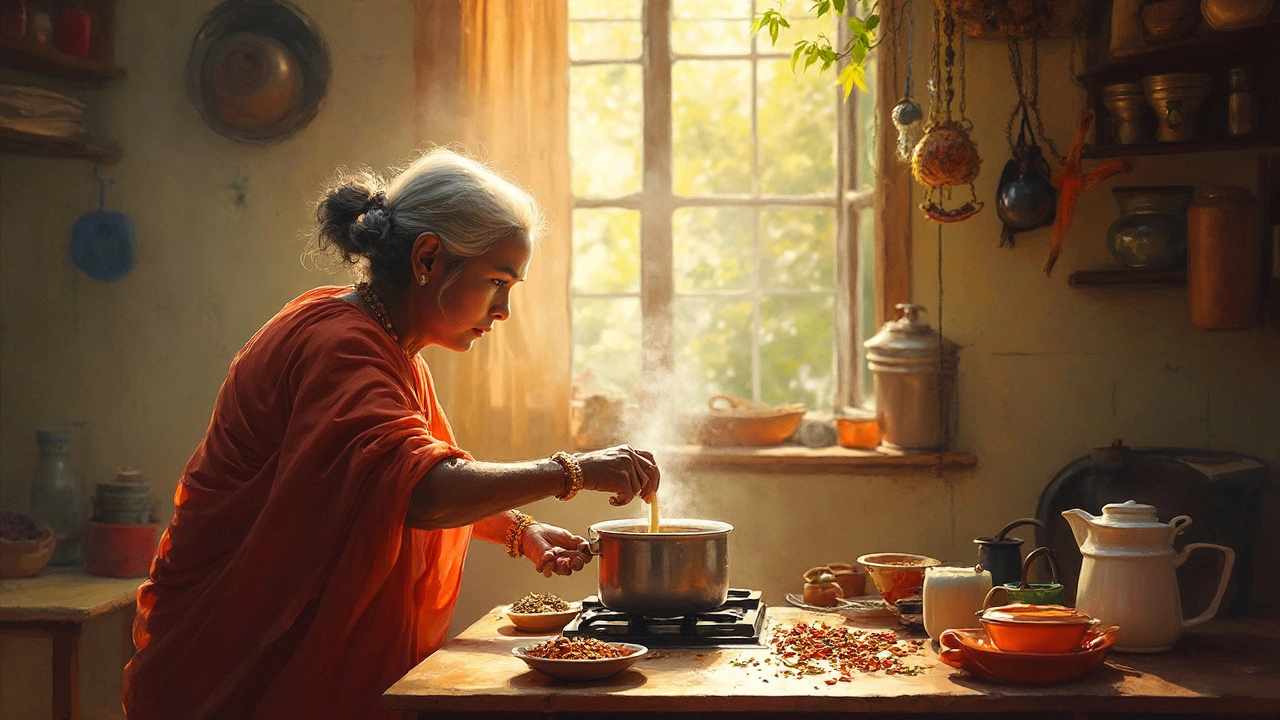Indian Tea – Flavors, History, and Brewing Secrets
When talking about Indian tea, a diverse family of infused teas that blend black tea leaves with aromatic spices, herbs, and sometimes milk, you’re stepping into a tradition that spans half a continent. Also known as chai, this beverage isn’t just a drink; it’s a cultural ritual that fuels mornings, sparks conversations, and marks celebrations across India.
One of the most beloved sub‑types is masala chai, black tea brewed with a mixture of cardamom, ginger, cinnamon, cloves, and pepper. The spice blend—often called tea spices, the specific aromatics that give Indian tea its signature warmth—does more than add flavor; it brings health benefits like improved digestion and a gentle energy lift. The classic preparation method demands simmering tea leaves, water, milk, sugar, and the spice mix together, resulting in a creamy, sweet, and slightly spicy brew.
Beyond masala chai, India boasts distinct regional teas: Assam tea from the northeast, known for its bold, malty character; Darjeeling tea, the “Champagne of teas” with floral notes; and Nilgiri tea from the south, offering a smooth, brisk profile. Each region’s terroir influences leaf flavor, while local customs dictate how the tea is served—plain, with milk, or spiced. Understanding these differences helps you choose the right tea for any mood or occasion.
Preparing a great cup hinges on tea brewing, the technique that balances water temperature, steeping time, and ingredient ratios. A common mistake is using boiling water for delicate leaves, which can turn the brew bitter. Instead, aim for 90‑95°C for black teas and 80‑85°C for green or herbal bases. The steeping time usually ranges from 2‑5 minutes; longer steeping extracts more tannins, creating a stronger, more astringent cup. Adding milk late in the process preserves its creamy texture, while sugar dissolves best when the mixture is still hot.
Spices don’t just flavor the tea; they shape its health impact. Cardamom supports respiratory health, ginger aids digestion, and cinnamon can stabilize blood sugar. When you blend these spices thoughtfully, you create a beverage that works as a natural remedy as well as a comfort drink. For those seeking a lighter version, you can swap heavy cream for almond or oat milk, or reduce sugar without losing the signature warmth.
Now that you’ve got a solid grasp of what Indian tea is, how its regional varieties differ, and why the right brewing method matters, you’re ready to explore deeper. Below you’ll find articles that break down classic Indian dishes, spice science, and cooking tricks—all tied together by the love of flavor that Indian tea exemplifies. Dive in and discover how each post can sharpen your kitchen skills and broaden your palate.

Why Do Indians Put Milk in Their Tea?
Indian tea, often infused with milk, is a staple in many households, forming an integral part of the breakfast routine. The tradition of adding milk to tea blends richness with a soothing balance. With deep cultural roots and health benefits, milk tea has become a beloved morning ritual. It’s not just about taste but also about comforting traditions and nutritional value.